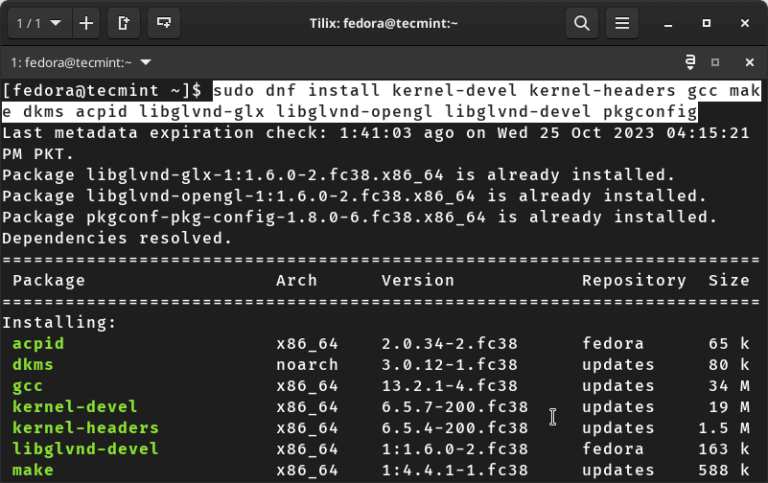Safeguarding Linux Landscapes: Backup and Restore Strategies
Introduction
In the dynamic world of Linux environments, safeguarding data stands paramount. Whether for personal use or maneuvering through server settings, understanding the depth of backup and restore strategies can be a game-changer. This article unfurls the multifaceted avenues of Linux backup and restore strategies, touching upon the necessity to have a fortified plan and how it keeps the data landscape secure and retrievable in Linux operating systems.
Understanding Linux File System
Before delving into the intricacies of backup and restore strategies, it’s vital to understand the Linux file system. Linux supports several file systems such as ext4, XFS, and Btrfs, each boasting unique features that govern how data is stored and retrieved. Appreciating the nuances of these file systems can significantly influence your backup and restore strategy, rendering it more robust and suited to your specific needs.
Backup Strategies
Protection starts with a proper backup strategy. Let’s explore various backup avenues available in Linux environments.
Manual Backup
Utilizing Basic Linux Commands
Linux offers potent commands like cp, tar, and rsync to facilitate manual backups. These commands are versatile, allowing users to specify exactly what to back up.
Pros
- Full control over the backup process
- No additional software required
Cons
- Requires good knowledge of Linux commands
- Time-consuming and prone to human errors
Automated Backup
Cron Jobs
Cron jobs make it possible to schedule backups at regular intervals, automating the backup process and reducing the possibility of human error.
Linux Backup Solutions
Bacula and Amanda stand tall as holistic solutions offering a range of features to facilitate automated backups.
Pros
- Regular automatic backups
- Comprehensive solutions with detailed reporting
Cons
- Can be complex to set up initially
- Potential overhead on system resources
Restore Strategies
Having a backup is half the journey; being adept at restoration completes it. Let’s delineate various restoration strategies pertinent to Linux environments.
Manual Restore
Restoring with Linux Commands
Using Linux commands for restoration carries the same pros and cons as using them for backups, offering control but requiring expertise.
Automated Restore
Script Utilization
Scripts can automate the restoration process, working seamlessly with the backup tools to restore data when necessary.
Integrated Solutions
Many backup tools offer integrated restore functionalities, aiding in a seamless recovery process.
Pros
- Faster recovery
- Less prone to human errors
Cons
- Complexity in setting up and maintaining the system
- Dependence on the tools and scripts
Backup and Restore Strategies for Different Linux Environments
From individual users to large enterprises, Linux caters to a vast array of environments, each demanding a tailored approach to backup and restore strategies.
Personal Computers
Personal Linux Backup Tools
For individual users, tools like Deja Dup and Timeshift offer user-friendly interfaces to back up and restore data.
Servers
Enterprise Solutions
On the enterprise front, solutions like Bareos present a robust choice for large-scale environments with high demands.
Best Practices
Security
Encrypting Backups
Encryption ensures data security, rendering the backups inaccessible to unauthorized users.
Maintenance
Regular Testing
Regular testing of the backup setups guarantees a functional restore system when the need arises.
Log Monitoring
Keeps track of the backup status, aiding in prompt error detection and resolution.
Case Studies
Delving into real-world scenarios presents a kaleidoscope of situations where a sound backup and restore strategy literally saved the day, offering a practical insight into its necessity.
Conclusion
The Linux landscape, with its versatility and open-source nature, offers a rich ground for data processes. However, this comes with a responsibility to shield the data effectively. Instituting a robust backup and restore strategy doesn’t just safeguard information; it brings peace of mind, security, and ensures business continuity in enterprise environments.
Understanding and implementing a meticulous backup and restore strategy is akin to having a well-oiled safety net, always ready to catch you when unforeseen circumstances strike. In the evolving digital space, let’s stride with caution, armoring our Linux landscapes with the best backup and restore strategies available today.

![How to Annotate PDFs in Linux [Beginner's Guide]](https://webomate.net/wp-content/uploads/2023/08/how-to-annotate-pdfs-in-linux-beginners-guide-768x501.png)



